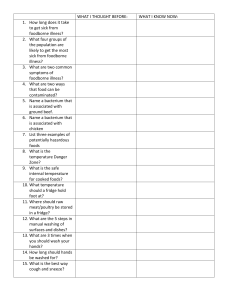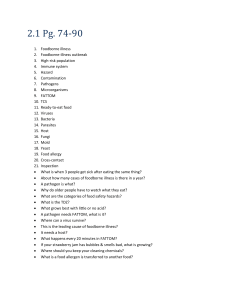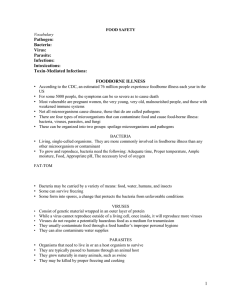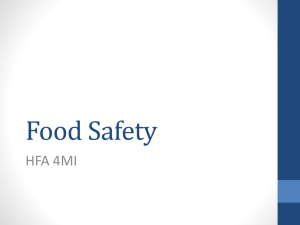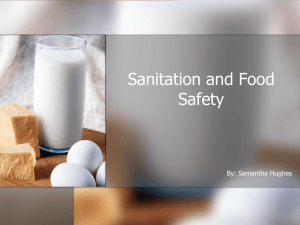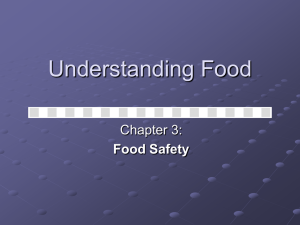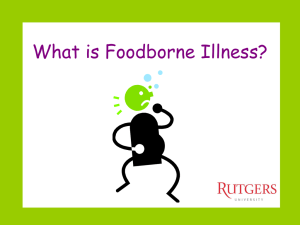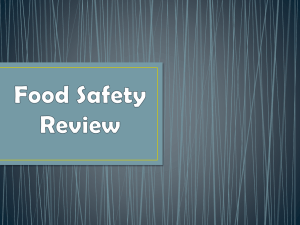Chapter 20 – Keeping Food Safe
advertisement
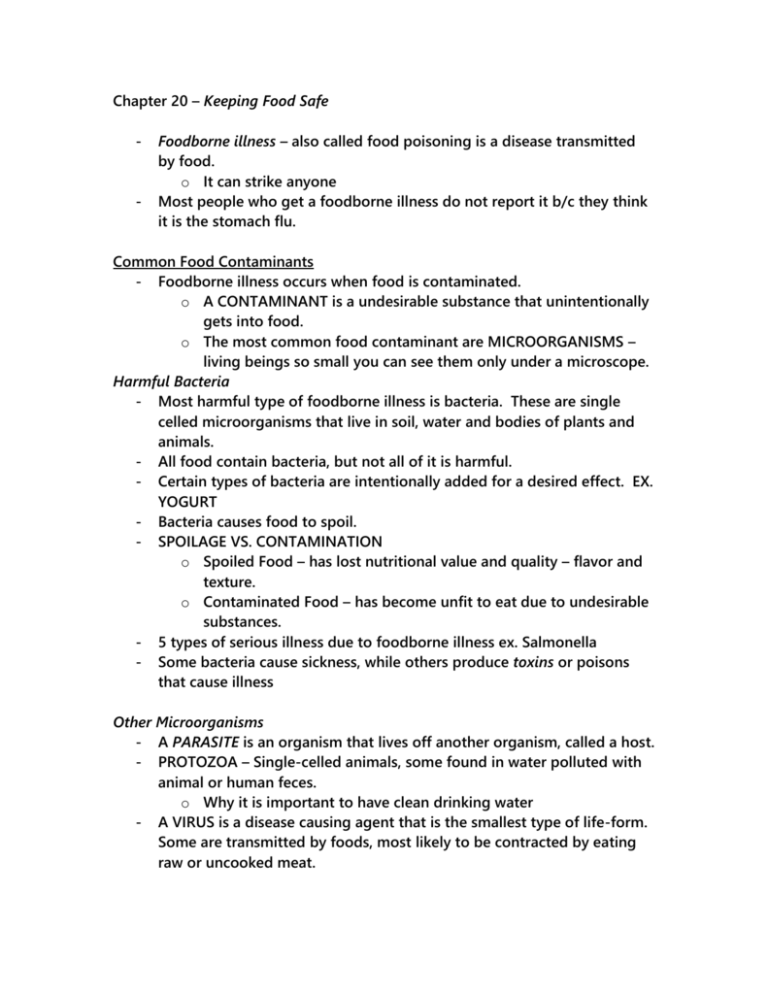
Chapter 20 – Keeping Food Safe - - Foodborne illness – also called food poisoning is a disease transmitted by food. o It can strike anyone Most people who get a foodborne illness do not report it b/c they think it is the stomach flu. Common Food Contaminants - Foodborne illness occurs when food is contaminated. o A CONTAMINANT is a undesirable substance that unintentionally gets into food. o The most common food contaminant are MICROORGANISMS – living beings so small you can see them only under a microscope. Harmful Bacteria - Most harmful type of foodborne illness is bacteria. These are single celled microorganisms that live in soil, water and bodies of plants and animals. - All food contain bacteria, but not all of it is harmful. - Certain types of bacteria are intentionally added for a desired effect. EX. YOGURT - Bacteria causes food to spoil. - SPOILAGE VS. CONTAMINATION o Spoiled Food – has lost nutritional value and quality – flavor and texture. o Contaminated Food – has become unfit to eat due to undesirable substances. - 5 types of serious illness due to foodborne illness ex. Salmonella - Some bacteria cause sickness, while others produce toxins or poisons that cause illness Other Microorganisms - A PARASITE is an organism that lives off another organism, called a host. - PROTOZOA – Single-celled animals, some found in water polluted with animal or human feces. o Why it is important to have clean drinking water - A VIRUS is a disease causing agent that is the smallest type of life-form. Some are transmitted by foods, most likely to be contracted by eating raw or uncooked meat. - MOLDS are mainly associated with food spoilage. Molds form on foods that have been stored for extended periods after opening. o When molds on liquids form, you need to throw it out, but you can simply cut off the molds found on solid food forms. Natural Toxins - Natural toxins are plant substances which defend themselves against insects, birds, and animals – not usually toxic to humans. Chemicals - Chemicals that come into contact with the food supply can be another source of foodborne illness - Chemicals such as pesticides are helpful and protect food - Food additives are chemicals added during food processing. - PESTICIDE RESIDUE – chemical pesticide particles left on food after it is prepared for consumption. - Gov’t agencies have strict guidelines regarding applying pesticides to food. - ENVIRONMENTAL CONTAMINANTS – are substances released into the air or water by industrial plants. These substances make their way into foods. - There are helpful organisms that help change the taste and texture of foods – some cheeses to help them age. o Lactic acid give yogurt its tangy taste.
